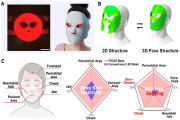The BOD of Samsung approved the spin-off of the LCD business from Samsung to become a new cooperation named Samsung Display. Going forward, the new corporation will consider a merger with Samsung Mobile Display to enhance their flat panel display business.
According to WitsView, the LCD research division of TrendForce, the main purpose for the spin-off of the LCD business, which will be operating independently from Samsung Electronics, is to strengthen the competitiveness of the display business based on a more flexible strategy. On the other hand, the restructure will enable Samsung Electronics to concentrate on more profitable businesses including semiconductor, smart phone, and media display & appliances, and further to the development of software and apps.
Most of the business divisions in Samsung Electronics possess excellent profitability. Even though the end market demand was weakened by the macroeconomic crisis, DM&A (Digital Media & Appliances) business still achieved 10% operating margin in 4Q11. Display Panel division remains in loss, of which AMOLED segment is profitable; however, LCD has been in long-term loss, resulting in the spin-off from Samsung Electronics. It is expected that the company will obtain an improved financial statement after the spin-off, while Samsung Display must enhance its competitiveness to face the pressure of being financially independent.
In the past, Samsung’s TV and LCD divisions have been extremely close, helping each other out in times of need; however, after the LCD division spins off into an independent company, the new company will not only lose the support from the Samsung conglomerate’s TV division, but it will also need to face the challenges in overseas exports due to the end of the Sony-Samsung partnership.
Even though the new company will still be under Samsung Electronics, and the TV division will continue provide necessary support, but the relationship will no longer be on par with the past. On other hand, Sony continues to purchase panels from Samsung, maintaining a total of 14 million pieces in 2012. However for a newly established company that recently lost Sony as a strategic partner, it is inevitable that it has to expand outwards to compensate for its immense production capacity, with China and emerging markets as the future target markets.
WitsView indicates that in 4Q2011, Samsung’s panel took up nearly 20% of China’s panel market share, directly threatening CMI and AUO’s market position in China. In addition to Samsung Electronic’s announcement of setting up a 12-inch manufacturing plant in China for the semiconductor business, the LCD division also has a joint-venture with China’s major LCD TV maker, TCL in the operation of CSOT 8.5 generation line. In 2011, TCL’s LCD TV shipment reached 9.3 million, ranked at top one amongst the China TV brands. This year, China TV brands are not only expanding domestic sales but they are also actively seeking export OEM businesses; their future prospects cannot be ignored.
Samsung is the major panel supplier for Apple’s iPads. However, Samsung is also Apple’s major competitor in mobile phones, tablets as well as notebook, SmartTV in the future; with Samsung leading the game in AMOLED technology ahead of its industry peers, Apple will not be able to obtain any favorable business deals under these existing circumstances. In the past, HTC has also experienced difficulties in purchasing Samsung’s AMOLED panels. Therefore, with LCD division spin-off, the new company will become a pure panel component supplier with advanced AMOLED technology, allowing them greater flexibility in developing client relations, causing imminent threat to other panel makers.
Panel makers enjoyed high profit margins when the market was under panel shortage. However, they had to suffer a huge loss when the market was under oversupply situation. WitsView indicates that the soon-to-be independent Samsung Display would require even more precise strategies, including expanding and establishing a sound client base, increasing the flexibility of production line, R&D capabilities, maintain its technology advantage and cost-cutting measures to ensure better financial performances.





 CN
TW
EN
CN
TW
EN





